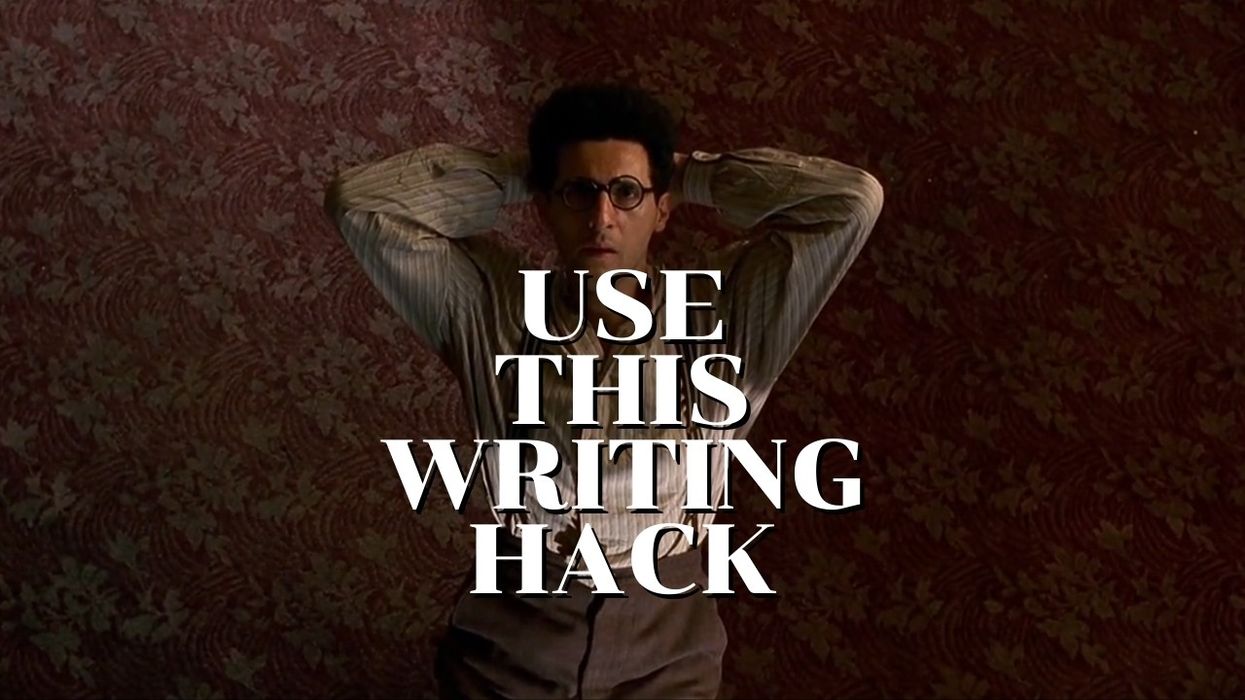This TV Writer Strategy Became My Feature Writing Hack
Everyone gets writer's block. But this simple trick I learned from a friend helped me never lose a day.

I'll be the first to admit I don't know everything about writing. In fact, over the last few years, I feel like I've learned arguably even more than I've taught. One of the biggest reasons I learned so much was that I spent a lot of time crossing from writing features, my usual medium, into writing television. On TV, things are done very differently. And I think, sometimes smarter.
I was developing a show last year with a seasoned TV writer, and we were working on an outline. Now, when I'm writing a feature, I write an outline or even a treatment like we have here on No Film School. Then I look back and forth from that document to the screenwriting software I have open and hope the scenes come.
My buddy saw me doing this and was like, "What happens if you get stuck?" And I mentioned taking a lot of walks...
He had a much better solution.
For television, he (and most of the shows he's worked on) make outlines comprised of all the scene headings in an episode, in order of the way they happen. So they would look like this...
EXT. FIELD - NIGHT
FRED (10) runs through the stalks of corn, playing hide and seek with the other neighborhood kids when he is suddenly all alone. finding himself in the middle of a top circle. That's when he's beamed up into the ship.
INT. SPACESHIP - NIGHT
It's a clear white void. Fred meets the ALIENS and is given the meaning of life.
INT. CLASSROOM - DAY
Ten years later. Older Fred is now teaching the meaning of life to a ton of professors and world leaders, he's seen as a spiritual guru, but we learn he has never told anyone about the aliens.
These scene headings and brief descriptions continue from start to finish of the episode. On a TV show, you turn these outlines into the studio to get notes, and they get broken and rebroken in the room before you go off to write. There are also clearly marked act breaks, so we know when we are transitioning.
And I looked at that and thought, I should be doing this for my features.
It's a great tool to tell people what happens in the story. There's almost no dialogue, but if you have a punchy line or great zinger, you can put that in there as well.
I'm here to tell you that they will change the way you write features. Not only do you get to look at the entire movie, you can add scene headings for the things you think are missing, like a B plot or even the establishing or connecting scenes. You can see the whole movie in a few pages, and then take your time expanding and refining.
Now, you don't have to do this for the entire outline if you want. You can write your scenes and see how it goes. But if you are struggling, try to just write the scene headings.
You can stop writing full scenes and just sit there and figure out the headlines of what happens next, without the heavy lifting of all the dialogue. When you return to the draft, refreshed, you go back to those scene headings and begin to fill them in.
Suddenly, you're going to be increasing your output, and taking the fear out of writing. You will know what happens next, and that's the burden of any writer.
Now, the pressure is just on making it good!
So try it out and let me know what you think in the comments.












